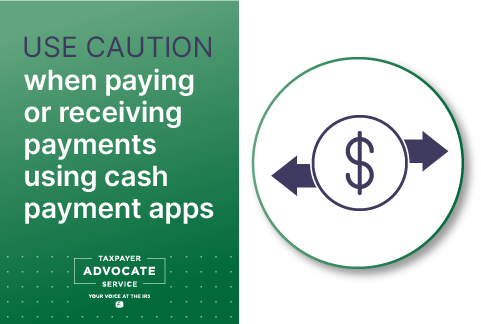Digital Payment Applications & Taxes
Here’s something important to pay attention to this year if you use certain cash applications to send or receive money from others for something other than business transactions.
After a night out with friends, some of whom didn’t come with cash, the group decides that one person pays, and the rest will send their share of the meal (plus tip!) on Venmo or another type of cash payment application. Or after a day shopping with your older child and you pay for that pair of pants, but your child is responsible for paying you back later using a cash app.
These situations should be no big deal, right?
Not necessarily. Be careful, because how that payment is classified could cause you or them to receive a Form 1099-K, Payment Card and Third Party Network Transactions. Form 1099-K is an information return and is provided to the IRS and to you.
If this happens to you, make sure payments to you or others are properly classified as an amount paid for something other than goods or services where possible. On sites like PayPal and Venmo, a payment can be designated whether it is to family and friends or a business transaction for goods and services. This designation will determine if the transaction(s) result in the issuance of a Form 1099-K.
If the payment(s) are incorrectly marked as a business transaction, and the calendar year total exceeds $600.00, a Form 1099-K will be issued and the IRS will expect to see the income reported on your tax return.
So, if you want to minimize the chance of an error, be sure to ask those friends or family members to correctly designate the payment as a non-business-related transaction and then make a note yourself of what the payment was for and from whom it was received.
When is this type of third-party payment reporting starting?
It is effective for calendar years beginning in 2022. Taxpayers should receive Form 1099-K by January 31, 2023.
Why is this type of reporting now required under the law?
Third party information reporting has been shown to increase voluntary tax compliance and improve collections and assessments within IRS. Form 1099-K will allow the IRS to check amounts reported on the form against amounts reported by taxpayers on their tax returns. If the payment was received for a service or sale of product(s), the amount must be reported on your tax return.
When can I expect to see if a 1099-K is issued?
Form 1099-K must be furnished to the payee by January 31 of the year following the transactions, but only if the aggregate amount of payments to a participating payee exceeds $600 for the calendar year. So, it will depend on how often you and your friends and family do this each year, for how much each time, and how the payment(s) are classified.
Note: The prior threshold for reporting these types of payment card and third-party transactions was $20,000, but the American Rescue Plan Act of 2021 reduced it to $600 for tax years 2021 and forward.
January 31 does not give you a lot of time to fix any incorrect form at that point before filing. It’s better for you and everyone involved if you talk about the right way to do this when it happens so it doesn’t cause issues come next tax filing season.
What if a payment app mistakenly sends me a 1099-K after a meal with friends?
The law is clear that money received as a gift or reimbursement of a share of a meal should not be reported on a 1099-K. But mistakes may happen.
Next year, if you erroneously receive a 1099-K, you will have to contact the payment app company to request they send a correction to the IRS. This could be time consuming and affect how fast your return will finish being processed.
If you fall into this situation, see the IRS FAQs for how to have it corrected.
More Information
You can find more information about this on the IRS’s General FAQs on Payment Card and Third Party Network Transactions page, and on these other pages:
Visit the Taxpayer Advocate Service’s Get Help center for a list of tax topics to assist you with resolving many tax related issues.
For more updates from the Taxpayer Advocate Service, visit the news and information center to read the latest tax tips, blogs, alerts and more.

